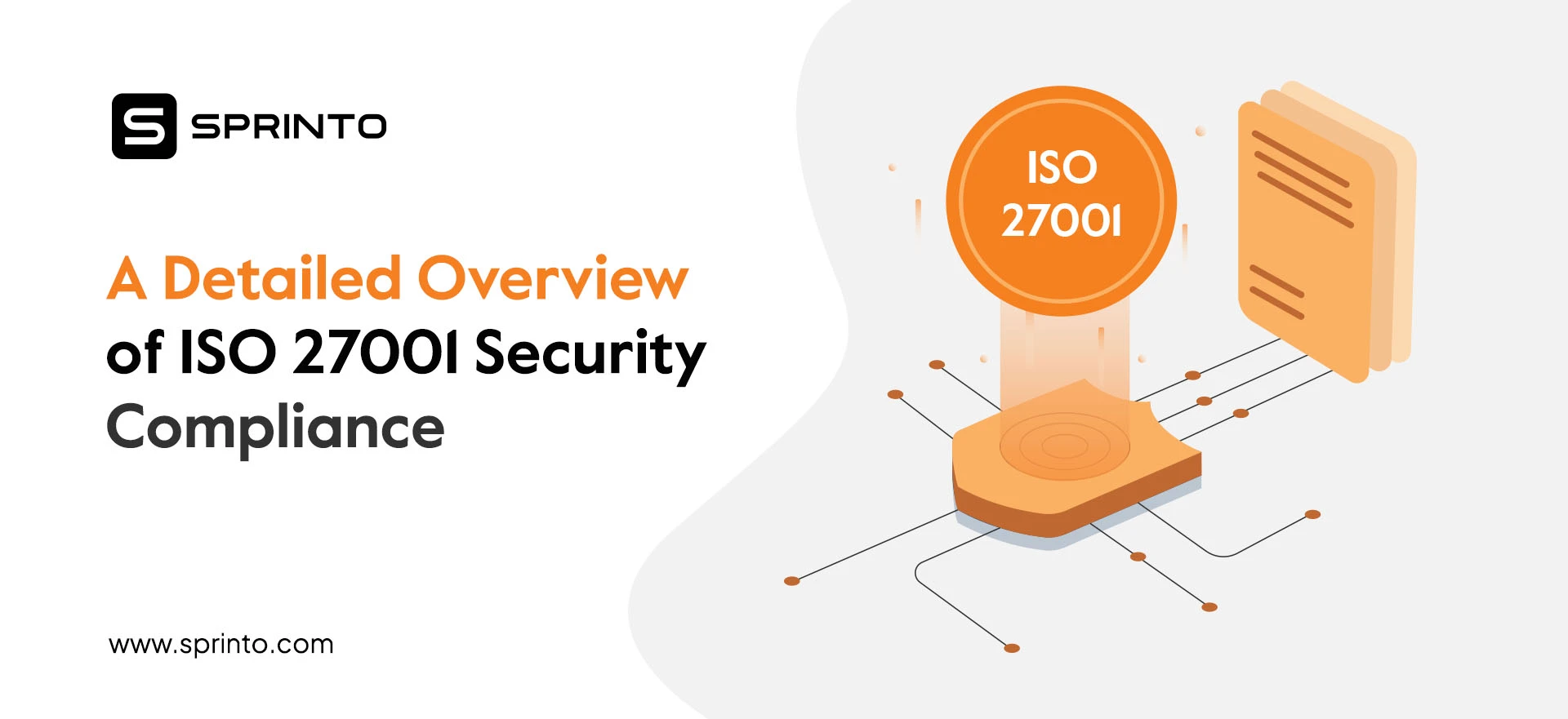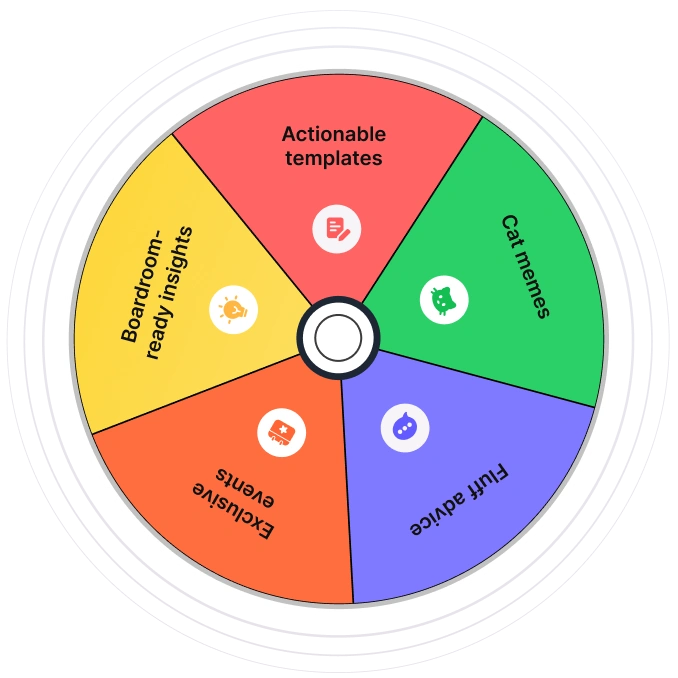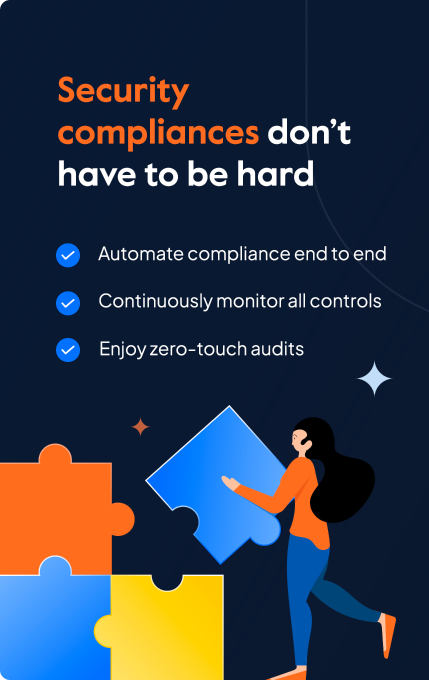Nearly 60% of organizations that suffer a cyber attack are unable to recover from it and often close within six months of the incident. Around 43% of cyberattacks are aimed at small to medium businesses.
The threat landscape targets you. While, it is important to be ISO 27001 compliance ready to land enterprise customers, you should also tick this checkbox to be secure. Data protection and supply chain risks are important, ISO 27001 compliance won’t just open doors, it can help you stay off an attacker’s radar. This guide unpacks what ISO 27001 compliance really means, why it’s critical for modern SMBs.
| Why It Matters: ISO 27001 provides a risk-based framework and ISMS that helps SMBs proactively secure data, meet regulatory and customer requirements, and shorten enterprise procurement cycles. |
| Core Requirements: You must scope your ISMS, assess and treat risks, assign clear roles, document tailored Annex A controls in a Statement of Applicability, and embed continuous monitoring, audits, and management reviews. |
| Making It Real: An automated compliance platform (like Sprinto) streamlines control selection, evidence collection, and audit readiness—turning static policies into living workflows. |
ISO 27001: The basics
The International Organization for Standardization (ISO) and the International Electrotechnical Commission (IEC) created the ISO 27000 series, which provides a family of standards covering different aspects of information security. ISO 27001 forms a part of this series.
The standard went through multiple revisions like ISO/IEC 27001:2005 (the first edition), ISO/IEC 27001:2013 (aligning the standard with ISO’s “Annex SL” structure) and the current ISO 27002:2022 (controls from 114 down to 93 with new themes like threat intelligence and data masking).
What is ISO 27001 compliance?
ISO/IEC 27001 compliance is an internationally recognized standard for establishing, implementing, maintaining, and continually improving an Information Security Management System (ISMS). It is the gold standard for building a defensible security posture and gives you a framework to identify information security risks and put guardrails across people, processes, and tech to maintain confidentiality, integrity, and availability.
At its core, ISO 27001 compliance means:
- You’ve built an Information Security Management System (ISMS)
- You’re running it with intention and discipline
- You can prove it with documentation, metrics, and audit trails
In short, ISO 27001 compliance signals trust. It tells your customers, “We take data seriously and we have the systems to back it up!”
What is the purpose of ISO 27001?
The purpose of ISO 27001 is to systematically identify risks to information assets and apply appropriate security controls. It ensures the confidentiality, integrity, and availability of data while aligning with business and regulatory requirements.
What are the main principles of ISO 27001?
ISO 27001 is built on the principles of Confidentiality, Integrity, and Availability (CIA). These three elements form the foundation of an effective ISMS. Here’s what they mean:
- Confidentiality: Information should be only accessible to authorized individuals and not disclosed to unauthorized parties.
- Integrity: Information should be protected from being altered, tampered with, or destroyed in an unauthorized way, ensuring it stays accurate and reliable.
- Availability: A guarantee that information and systems remain accessible and usable when needed by authorized users.
How does ISO 27001 differ from SOC 2, HIPAA, and GDPR?
ISO 27001 sets up a repeatable management system for information security, while SOC 2 audits specific controls, HIPAA regulates healthcare data, and GDPR enforces privacy rights.
Here’s a table with their differences:
| Standard / Regulation | Scope | Focus | Geography |
| ISO 27001 | Organization-wide | Building an ISMS (Information Security Management System) | Global |
| SOC 2 | Service providers | Proving security controls via audit (Trust Service Criteria) | Primarily U.S. |
| HIPAA | Healthcare entities & partners | Protecting medical/health data (PHI) | U.S. |
| GDPR | Any org handling EU personal data | Data privacy & individual rights | EU/Global reach |
Why does ISO 27001 matter?
ISO 27001 certification establishes a framework of controls, metrics, and continuous monitoring that constantly refines your information security policy. It gives you a competitive edge when meeting customer expectations and navigating evolving regulations.
Why is ISO 27001 important for organizations?
ISO 27001 forces you to formalize your security posture, from role-based access controls to incident management protocols. This prevents ad-hoc fixes and embeds security into business and compliance operations. When security is made scalable, compliance gaps do not hinder future growth.
Here are three more benefits of complying with ISO 27001:
1. Aligns with global data protection laws:
ISO 27001 isn’t a one-to-one match for GDPR, HIPAA, or SOC 2, but significant overlaps exist. A well-implemented ISMS will help you map controls to multiple compliance frameworks, streamlining reporting and reducing audit fatigue.
2. Improves risk visibility and response:
ISO 27001 requires risk registers, defined incident workflows, periodic reviews, and audit logs to clarify who owns what, how incidents are tracked, and what gets escalated. This internal rigor will create a culture where security is baked into daily operations and not tracked as an afterthought.
3. Protects data and reduces breach exposure:
ISO 27001 will allow you to continuously identify and mitigate risks, from misconfigured S3 buckets to third-party access sprawl. When you have a lean team, this will help you be proactive rather than reactive. It also builds confidence with customers and regulators by showing you take security seriously.
Is ISO 27001 mandatory or voluntary?
ISO 27001 is a voluntary standard, meaning no law requires organizations to adopt it. However, many companies choose ISO 27001 certification because customers, partners, or regulators often expect proof of strong security practices.
In some industries (like finance, healthcare, or government contracts), ISO 27001 can feel almost “mandatory” in practice because it’s a common requirement in vendor due diligence and RFPs (Request for Proposal).
Which industries benefit the most from ISO 27001?
Industries that deal with sensitive or regulated data benefit the most from ISO 27001, as it helps prove security maturity, reduce risk, and build trust with customers.
Startups and SaaS companies gain an edge since ISO 27001 certification often becomes a ticket when selling to enterprise customers who demand proof of strong security controls.
Beyond tech, here are some other key industries:
- Finance and banking: Strengthens defense against fraud and regulatory scrutiny.
- Healthcare: Secures patient information and supports HIPAA/GDPR compliance.
- Government and defense: Ensures classified or critical data is managed securely.
- Legal and consulting: Protects confidential client information.
- E-commerce and retail – Safeguards payment and personal customer data.
How does ISO 27001 help build customer trust and close deals?
ISO 27001 helps build customer trust by proving that your organization follows a structured, independently audited security framework. Enterprise buyers increasingly demand demonstrable security baselines before signing contracts.
Without ISO 27001 (or a similar certification), vendors are often forced into lengthy security questionnaires, detailed technical reviews of their infrastructure, and higher scrutiny of their internal processes. This slows down procurement and frequently leads to lost deals.
ISO 27001 compliance reduces buyer hesitation, accelerates procurement cycles, and signals that your organization can be trusted with sensitive data. For SaaS providers and startups in particular, it can mean the difference between getting blocked at security review and closing high-value enterprise contracts.
| Equalture speeds up sales with ISO 27001 Equalture, a neuroscience-driven hiring platform, saw enterprise sales stall under the weight of security questionnaires. Prospects often refused demos when they learned the company lacked ISO 27001 certification. CTO Jaap Haagmans knew compliance was the key to unlocking growth, but needed a fast, lean way to get there. With Sprinto, Equalture reached ISO 27001 audit readiness in 4 sessions. “Customers now have a lot more comfort in working with us, in continuing to work with us, or rolling us out to the entire organization,” notes Jaap. |
The ISO 27001 framework
This section highlights the core elements of the ISO 27001 framework: the controls included in the framework, the specific requirements organizations must meet, the detailed Annex A control list, the mandatory policies and procedures, and the role of an ISMS.
These pieces define how ISO 27001 turns security best practices into a measurable, certifiable standard.
What are the ISO 27001 compliance framework controls?
ISO 27001 compliance isn’t a checklist of must-do tasks—it is a risk management framework. At its core are “Annex A controls,” which serve as tactical levers to mitigate information security risks across people, processes, and technology. ISO/IEC 27001:2013 lists 114 controls across 14 domains (like access control, cryptography, supplier relationships)
The 2022 revision consolidates and refines these into 93 controls under 4 control themes:
- Organizational (37 controls): Policies, roles, third-party risk, and threat intel
- People (8 controls): Hiring, training, awareness
- Physical (14 controls): Entry controls, equipment security, clear desk
- Technological (34 controls): Access control, encryption, secure coding
Each control has attributes (e.g., cybersecurity, data protection) that help you filter and prioritize implementation according to business needs.
For example:
- A.5.23 – Information security for cloud services ensures your SaaS usage isn’t a blind spot
- A.8.10 – Information deletion enforces clean records for sensitive data
Controls act as modular building blocks, giving you structure and flexibility to scale security, meet buyer requirements, and reduce risk exposure.
Get ISO 27001 compliant faster with automation
What are the ISO 27001 requirements?
ISO 27001 helps you build a solid, scalable ISMS that supports your business goals (and keeps auditors off your back)
Here are the requirements of ISO 27001:
1. Clauses 4-6: Build the foundation
This will help you understand the process, and being thorough will ensure that the other parts are smooth:
- Define your ISMS scope: Identify the teams, systems, and data in scope.
- Identify stakeholder needs: Who relies on you to stay secure?
- Run a risk assessment: Identify and document the risks and how to manage them.
2. Clauses 7-10: Make it work
Here you should start working towards being compliant:
- Assign clear roles and responsibilities: Define who owns each process from maintaining policies to responding to incidents, so that accountability is never in question
- Roll out internal audits and training programs: Schedule regular checks to verify controls are in place, and equip your team with the knowledge to identify and report security issues
- Set up systems to monitor, review, and improve over time: Put in place dashboards, performance metrics, and management-review cadences that surface compliance gaps and drive timely corrective actions
3. Annex A: Apply Controls
Annex A of ISO 27001 is the control catalog to address specific security risks. It contains 93 controls grouped into four broad themes: organizational, people, physical, and technological. These range from access control and cryptography to supplier management and incident response.
While not every control is mandatory, organizations must assess which ones are relevant:
- Pick controls that match your risks: Pick the safeguards that directly reduce the threats and vulnerabilities you’ve identified, avoiding unnecessary overhead
- Justify every decision you make in a Statement of Applicability (SoA): Document why each control was included or omitted, creating a clear, auditable rationale that ties your ISMS back to real business risks.
What are mandatory ISO 27001 policies and procedures?
ISO 27001 requires a set of mandatory documents and records, including policies that form the backbone of an effective ISMS. Here’s a more detailed breakdown:
Mandatory documents:
- Scope of the ISMS – Defines the boundaries, applicability, and coverage of the Information Security Management System.
- Information security policy and objectives – Establishes the organization’s overarching security principles and measurable goals.
- Risk assessment and risk treatment methodology – Explains how risks are identified, evaluated, and addressed systematically.
- Statement of Applicability (SoA) – Lists all ISO 27001 controls and specifies which are applied, with justification.
- Risk treatment plan – Details the chosen actions and resources to mitigate identified risks.
- Risk assessment report – Documents the results of the risk analysis, including likelihood, impact, and prioritization.
- Definition of security roles and responsibilities – Clarifies accountability and assigns responsibilities for information security.
- Inventory of assets – Catalogs information assets and resources requiring protection within the ISMS scope.
- Acceptable use of assets – Defines rules for how employees and third parties may use organizational assets securely.
- Access control policy – Establishes how access rights are granted, managed, and revoked to safeguard information.
- Operating procedures for IT management – Outlines standardized methods for securely managing IT systems and services.
- Secure system engineering principles – Provides guidelines for designing and maintaining secure systems across their lifecycle.
- Incident management procedure – Describes how security incidents should be reported, assessed, and resolved.
- Business continuity procedures – Defines steps to maintain and restore critical operations during and after disruptions.
- Statutory, regulatory, and contractual requirements – Identifies applicable compliance obligations impacting information security.
Mandatory ISO 27001 records:
- Records of training, skills, experience, and qualifications – Evidence of staff competency and ongoing security awareness.
- Monitoring and measurement results – Documented data showing performance against ISMS objectives and controls.
- Internal audit program – A documented schedule and scope of internal audits for the ISMS.
- Results of internal audits – Findings and evidence from internal audits to verify ISMS effectiveness.
- Results of the management review – Records of top management’s periodic evaluations of ISMS performance.
- Results of corrective actions – Documentation of how identified issues were addressed and resolved.
- Logs of user activities, exceptions, and security events – Records providing traceability of system usage and security events.
What is an ISMS under ISO 27001?
An ISMS (Information Security Management System) is a structured framework of policies, processes, technologies, and people working together to protect information. It is a living system that adapts to risks, regulatory shifts, and business growth.
The ISMS drives continuous improvement through the Plan-Do-Check-Act (PDCA) cycle, ensuring security is embedded in day-to-day operations. In practice, the ISMS acts as the central nervous system for compliance, tying together risk management, controls, monitoring, and improvement activities.
Getting compliant
The ISO 27001 process can be overwhelming, especially if it’s your first time with compliance. Here, we break down the process, typical timelines, implementation costs, helpful tools and platforms, and who within your organization owns the responsibility.
How to achieve ISO 27001 compliance?
ISO 27001 demands a clear roadmap, one that aligns operational realities with a formalized risk management system. We’ll walk you through scoping, risk analysis, and audit prep. And it’s more critical than ever: 40% of compliance leaders say that between 11% and 40% of their parties are high-risk. You will be the weakest link in someone else’s supply chain if you’re not compliant.
Here’s what you should do:
1. Define ISMS Scope and Organizational Context
Your ISMS scope statement should define where your security responsibilities start and stop—and if you get this wrong, the rest unravels fast.
You’ll need to:
- Identify physical locations (offices, data centers, remote setups)
- Map departments, business units, and systems processing sensitive data
- List internal and external stakeholders (vendors, cloud providers, contractors)
- Capture applicable legal and contractual frameworks (GDPR, HIPAA, DPDP, SOC 2 overlap)
The goal? Align controls with actual business risks. Sprinto’s ISMS builder helps structure this from Day 1, ensuring audit-ready clarity.
2. Conduct a Risk Assessment
Use a formal risk assessment methodology to identify threats, vulnerabilities, likelihood, and impact across your assets.
- Choose between quantitative (risk scores) or qualitative (likelihood/impact matrices) models.
- Classify assets: sensitive customer data, financial records, IP, etc
- Map risks to relevant Annex A controls
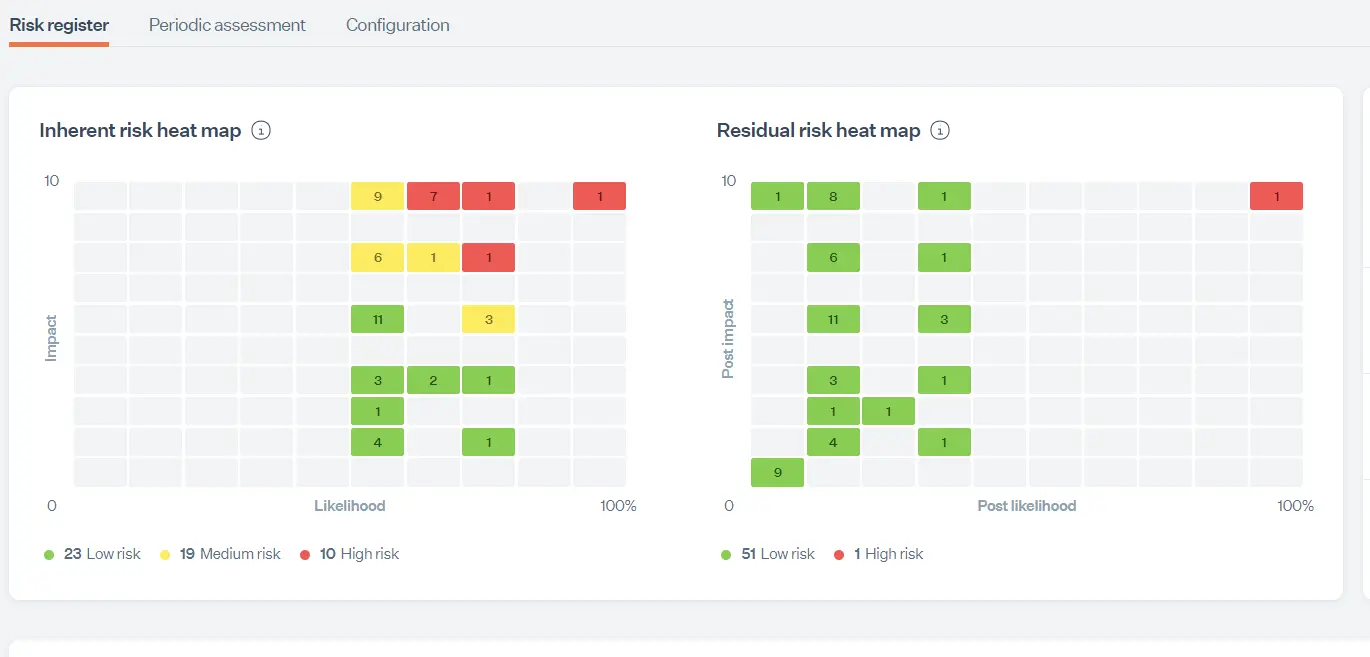
3. Develop a Risk Treatment Plan (RTP)
You should map out exactly how you’ll handle each identified risk. Your Risk Treatment Plan (RTP) becomes the playbook that turns assessments into action.
Decide how each risk will be addressed:
- Treat (mitigate via controls): Introduce or strengthen safeguards like adding encryption, tighter access controls, or new monitoring to drive risk likelihood or impact down to an acceptable level
- Transfer (e.g., cyber insurance): Shift the financial or operational burden to a thirdparty. This could mean purchasing cyber insurance, negotiating stronger SLAs with a SaaS vendor, or outsourcing certain functions to a specialist with deeper expertise.
- Tolerate (acceptable risk): For low impact, low-likelihood risks where control costs outweigh benefits, formally document that you accept this risk. Make sure leadership signs off on residual risk levels so there are no surprises down the road.
- Terminate (remove risky assets/processes): Eliminate the risk at its root – retire outdated systems, decommission unused applications, or halt risky business processes that no longer align with your security posture.
Give each treatment option clear deliverables – what success looks like, how you’ll verify it, and when you’ll revisit it in your next management review.
With Sprinto, you can:
- Spin up clause-mapped RTP templates in minutes
- Assign risk owners and set automatic reminders for control implementation and evidence collection
- Track treatment progress on a real-time risk dashboard, complete with control-effectiveness metrics
- Generate review-ready reports that show exactly which risks are still open, which controls are in place, and which residual risks leadership has signed off on
This structured, automated approach ensures your RTP isn’t a static document gathering dust but a living roadmap that keeps your ISMS moving forward.
Download your ISO 27001 Risk Assessment Template
4. Create Security Policies and SOPs
ISO 27001 demands live, enforceable documentation that governs your day-to-day operations. This means your policies and Standard Operating Procedures (SOPs) need to reflect what your team actually does, not what looks good on paper.
You’ll need comprehensive policies like the Information Security Policy, Access Control and Password Management, Acceptable Use Policy, and guidelines for Remote Work and BYOD setups which define your organization’s stance on security and user behaviour.
With this, you should spell out real-world situations. This should include your incident response and breach notification protocols, SSDLC practices, data classification and handling guidelines, and your business continuity plans.
With Sprinto, you can use clause-mapped templates of all mandatory ISO 27001 compliance documents. It lets you track version histories, keep documentation current, and collect employee attestations – all of which make audit readiness smoother and more reliable.
5. Assign Governance and Ownership
ISO 27001 isn’t a ‘set it and forget it’ playbook – it needs champions. You must designate real people to own and drive each piece of your ISMS compliance operations so security becomes a part of everyone’s daily routine.
You should start by appointing:
- ISMS Owner: the executive sponsor who ensures resources and visibility for the entire program
- Department-level Control Owners: managers who take hands-on responsibility for controls in their areas (e.g., HR, IT, Finance)
- Internal Auditors: independent reviewers who verify that processes are followed and flag gaps.
- Data Protection or Compliance Officers: specialists who guide legal, regulatory, and privacy requirements
Give each role clear charters and real-world tasks: from signing off on security exceptions to running tabletop exercices and updating control ownership lists. With everyone accountable, you avoid ‘paper ISMS’ syndrome and make security an operational habit.
With Sprinto, you get clause-mapped templates for every governance role and responsibility matrix, automated reminders for attestations, and a dashboard that shows exactly who signed off on which control – so audit prep becomes a byproduct of your normal workflows.
6. Implement and Monitor Controls
ISO 27001 isn’t satisfied with ‘we installed antivirus’, it needs ongoing proof that your safeguards are working. You need to roll out both technical and administrative measures then continuously verify their effectiveness in real time.
Some common examples include:
- Multi-Factor Authentication (MFA) for all critical systems – so that stolen passwords alone can’t open the door
- Endpoint protection and patch management to catch malware, close vulnerabilities, and ensure devices stay hardened
- Secure software development lifecycle (SSDLC) policies that bake security checks into code reviews, testing, and deployment pipelines
- Physical access restrictions and surveillance logs to guard server rooms, offices, and any facility where sensitive data resides
Sprinto integrates with your cloud stack (AWS, Azure, Google Workspace, OKta, Jira, etc.) to automate 80 % or more of control evidence collection and monitoring.
7. Internal Audit and Management Review
Internal audits, mandated by Clause 9.2, help ensure your ISMS remains aligned with actual operations. Schedule them quarterly or biannually and follow ISO 19011 guidelines to assess control effectiveness.
When issues arise, create CAPAs (Corrective Action Plans) that include a clear description of the non-conformity, specify the assigned owners and deadlines, and outline steps to prevent recurrence.
Following audits, conduct management reviews (Clause 9.3) to:
- Evaluate ISMS performance
- Adjust goals based on changing risks
- Reallocate resources if needed
Conduct regular management reviews (Clause 9.3) to evaluate ISMS performance, align security objectives, and plan resource allocation.
8. Get Ready for External Audit & Certification
Prepare documentation, artifacts, and access for the Stage 1 (documentation review) and Stage 2 (implementation review) audits by a certified external auditor.
Stage 1: Documentation Review
Auditors will check if you have defined the scope, documented risks, and created required policies.
Stage 2: Implementation Review
Auditors will validate that your controls are designed correctly and work efficiently through interviews, evidence, and control walkthroughs.
Sprinto’s audit workspace and readiness dashboard track compliance status across clauses and controls, giving auditors real-time visibility with minimal back-and-forth.
Get ISO 27001 compliant in weeks, not months
How long does it take to become ISO 27001 compliant?
The time it takes to comply with ISO 27001 and achieve certification typically ranges from 3 to 12 months. It depends on several factors such as the size and complexity of your organization, the preparedness of your ISMS and resource allocation.
How much does ISO 27001 implementation cost?
The cost of implementing ISO 27001 compliance can be between $50,000 and $200,000, depending on your organization’s size, industry, and current security posture.
The cost will also depend on how you choose to become ISO compliant. For example, if you consider hiring an external consultant or a firm, your expenditure will be higher than if you decide to use compliance automation software.
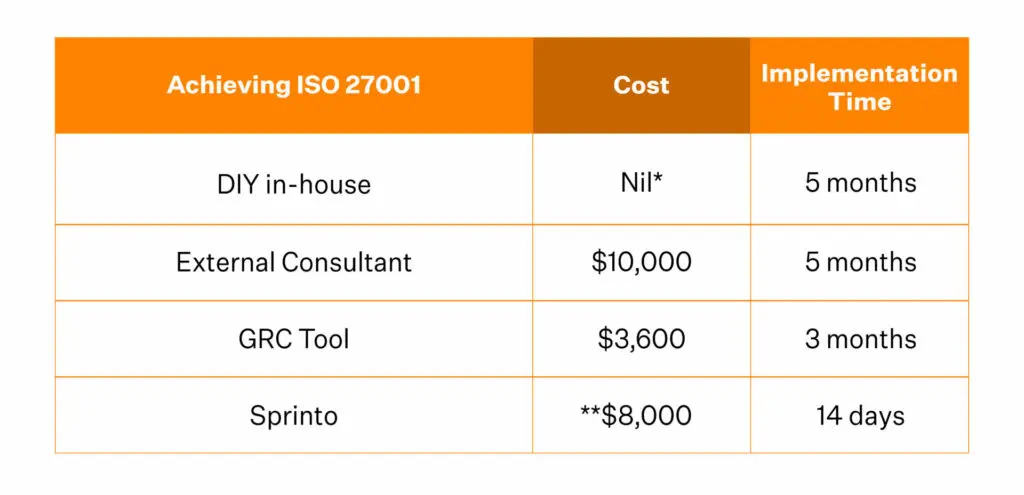
To get a more thorough estimate for your certification, check out our compliance cost calculator.
What resources, tools, or platforms help with ISO 27001 compliance?
Achieving ISO 27001 compliance requires a blend of processes, documentation, people, and technology. To speed up implementation, businesses usually start with pre-built policy templates, risk registers, and Statement of Applicability (SoA) formats.
Consultants and auditors often play a role in performing gap assessments, preparing for certification, and ensuring that all necessary processes are in place. While these resources provide the foundation, relying solely on manual efforts can make compliance slow, complex, and prone to human error.
This is where compliance automation platforms add significant value. Tools like Sprinto help automate evidence collection, map business operations to Annex A controls, and generate audit-ready reports.
Who in an organization is responsible for ISO 27001 compliance?
The responsibility for ISO 27001 compliance is shared across the organization, but led from the top.
Senior management is ultimately accountable, providing direction and resources for the Information Security Management System (ISMS). A CISO, Information Security Officer, or ISMS Manager usually takes charge of day-to-day implementation, overseeing risk assessments, controls, and audits.
At the same time, department heads and employees play a crucial role by following policies and applying security practices in their daily work, making ISO 27001 a collective responsibility.
The Audit Process
The audit process validates whether your Information Security Management System (ISMS) meets the standard’s requirements and is being applied consistently across the organization. Here’s what you need to know about preparing for, undergoing, and maintaining ISO 27001 audits.
How to prepare for an ISO 27001 audit?
An ISO 27001 audit is a structured examination of your ISMS. You’re proving your infosec program is alive, operational, and defensible. Here’s how you can get audit-ready without panic-loading screenshots the night before.
1. Confirm your ISMS scope and SoA are audit-proof
Auditors will check if your ISMS scope is clearly defined, realistic, and aligned with business risk. They’ll validate that your Statement of Applicability (SoA) maps your chosen Annex A controls to actual implementations.
Tie each Annex A control to a policy, evidence artifact, and responsible role. If you’ve marked a control as not applicable, include justification backed by a risk assessment.
2. Create a traceable evidence trail
ISO 27001 audits are driven by proof and not just intention. You should ensure that every policy, control, and risk has attached evidence: audit logs, screenshots, Jira tickets, training records, etc.
Centralize this evidence that is accessible by every compliance stakeholder. With Sprinto, evidence is auto-mapped to controls and updated continuously—no last-minute chasing.
3. Prep for management and internal audits
Auditors want to see your internal audit and management review minutes – including documented findings, improvements, and actions taken.
If your compliance department is not aware of a change that your testing department has made, this can lead to a compliance headache! Avoid this with a living document that tracks improvements over time. Static PDFs without follow-through are a red flag.
4. Align control ownership with actual job roles
Avoid generic role tags like “security team”. Auditors will interview stakeholders to validate whether the owners of access controls, backup processes, and vendor reviews understand and execute their responsibilities.
Run mock interviews and make sure that your control owners can explain what the control is, why it exists, and how it is measured. This has to be a recurring activity and not a one-time occurrence that evolves with your review documentation.
5. Review logs, alerts, and incident responses
Auditors will dig into your incident response process, including logs, alerting systems, and post-mortems.
Be prepared to walk through a real (or simulated) incident—who triaged it, how it was escalated, and how response timelines were met. Sprinto can automatically tag these artifacts to relevant ISO 27001 controls.
6. Eliminate siloed documentation
Outdated policies, missing review dates, or documents that don’t reflect actual practice will get flagged.
Apply version control. If a policy changed after a risk review, make sure that the change is documented, approved, and versioned. Use Sprinto’s policy management module to automate this.
What happens during an ISO 27001 audit?
The audit is typically conducted in two stages: Stage 1 (documentation review), where auditors verify that the ISMS framework and policies exist, and Stage 2 (implementation audit), where they test controls in practice.
The auditor will interview staff, review evidence, and assess whether security measures are effectively implemented. More details can be found in this guide to the ISO 27001 audit process.
Who conducts ISO 27001 audits?
Audits are carried out by accredited external auditors from certification bodies, such as BSI, TÜV, or other accredited firms. Organizations may also engage in internal audits conducted by their own compliance teams or third-party consultants to prepare for the certification audit.
See the list of the best ISO 27001 auditors for examples of trusted providers.
What documents and evidence are required for ISO 27001 certification?
ISO 27001 requires a set of mandatory documents, such as the Information Security Policy, Risk Assessment & Treatment methodology, Statement of Applicability, Incident Management Policy, and evidence of monitoring and internal audits.
These records prove that the ISMS is both documented and operational.
How often should ISO 27001 audits be performed?
Certification is not a one-time event. Organizations must undergo annual surveillance audits to ensure continued compliance and a recertification audit every three years. Surveillance audits are less intensive but ensure that the ISMS is continuously maintained.
How long is the ISO 27001 certification valid?
An ISO 27001 certificate is valid for three years, subject to successful annual surveillance audits. If an organization fails to maintain compliance, certification can be suspended or withdrawn before the three-year period ends.
What are the Common Challenges in Maintaining ISO 27001 Compliance?
Even after certification, staying compliant is a full-time job. ISO 27001 isn’t a one-and-done—it demands operational rigor, cross-functional alignment, and constant upkeep.
Here’s where teams typically slip:
- Documentation Decay: ISO 27001 demands live, auditable documentation—policies, SoA, risk treatments, and asset inventories. Without version control and audit trails, organizations face discrepancies between documented and operational controls.
- Control Drift: Process owners change, controls degrade, and periodic reviews are skipped. Security controls slowly become misaligned with actual operations, failing to meet the ‘continual improvement’ requirement.
- Ineffective Change Management: New systems, vendors, and employee roles introduce delta risks. Most orgs lack the operational discipline to reassess risks or update controls post-change.
- Lack of Audit Readiness: Teams often scramble ahead of surveillance audits due to scattered evidence, undocumented exceptions, and lack of control ownership visibility.
- Siloed Ownership: Compliance responsibilities are often distributed across teams—IT, HR, engineering, legal—without a unified system of accountability, making it hard to enforce and track actions consistently.
What are the risks of not being ISO 27001 certified?
Without certification, you risk greater exposure to security incidents, loss of customer trust, and missed business opportunities. Many partners and clients now expect ISO 27001 as proof of strong security practices.
It is advisable to implement a formal risk management policy and build a clear risk treatment plan to stay ahead of challenges rather than reacting to issues after they arise.
What are the most frequent mistakes companies make during ISO 27001 implementation?
Common mistakes include approaching ISO 27001 as a one-off project, neglecting leadership involvement, and underestimating documentation and monitoring requirements.
To avoid these missteps, you should consider using resources like the ISO 27001 automation guide that can streamline repetitive tasks and provide ongoing visibility into compliance.
How to maintain compliance year after year?
Think of ISO 27001 compliance as an ongoing journey rather than a final milestone. Regular internal audits, updated risk assessments, and continuous monitoring will help you maintain certification year after year.
Embedding compliance into daily operations and supporting it with automation makes the process far easier to sustain over the long term.
How Sprinto Helps:
Sprinto ensures that all documentation is centralized, auto-versioned, and mapped to ISO 27001 clauses. It also enforces runtime compliance with task automations, policy attestations, and continuous control validation. The software integrates seamlessly with your stack, auto-detects infra/personnel changes, and triggers workflows to update access controls, perform vendor reviews, or log new risks.
Check out how Officebeacon achieved compliance maturity and breezed through ISO 27001 audit using Sprinto.
Getting ISO 27001 compliant with Sprinto
Strong security posture is not easy to achieve, but the good news is that it is not impossible either, especially with the right tools. A combination of people and processes is the key ingredient to making your organization safe and secure.
Sprinto is a well-thought-out tool built with ease of use, consistency, people, process, and requirements in mind. It automates your compliance workflows, monitors for previously encountered and new threats, and creates an audit trail—all you need for easy and fast certification.
With Sprinto, you gain integrated risk assessment, control mapping, and in-house support from our experts at any time!
Want to know what we can do for your business? Contact us today to begin your easy compliance journey.
Frequently Asked Questions
Any business or service provider that handles, manages, or transmits client data should comply with ISO 27001. While it is not a compulsion, it is becoming increasingly challenging to operate without a robust security framework.
The three main principles of ISO 27001 are confidentiality, integrity, and data availability. Confidentiality refers to the practice of keeping data private and restricting access to it to authorized individuals only. Integrity means that data is not altered, tampered with, or damaged during transmission. Availability means that authorized individuals can access data as needed.
The ISO 27001 compliance framework is a structured set of policies, processes, and controls designed to help organizations establish, operate, monitor, and continually improve an Information Security Management System (ISMS). It provides a risk-based approach to managing sensitive information and outlines 93 Annex A controls (as per the 2022 update) across four key themes—organizational, people, physical, and technological—ensuring security is embedded across all layers of the business.
Payal Wadhwa
Payal is your friendly neighborhood compliance whiz who is also ISC2 certified! She turns perplexing compliance lingo into actionable advice about keeping your digital business safe and savvy. When she isn’t saving virtual worlds, she’s penning down poetic musings or lighting up local open mics. Cyber savvy by day, poet by night!
Explore more ISO 27001 articles
ISO 27001 Overview & Requirements
ISO 27001 vs Other Frameworks
ISO 27001 Audit & Certification Process
ISO 27001 Management & Assessment
ISO 27001 Implementation & Automation
ISO 27001 Industry-Specific Applications
research & insights curated to help you earn a seat at the table.



